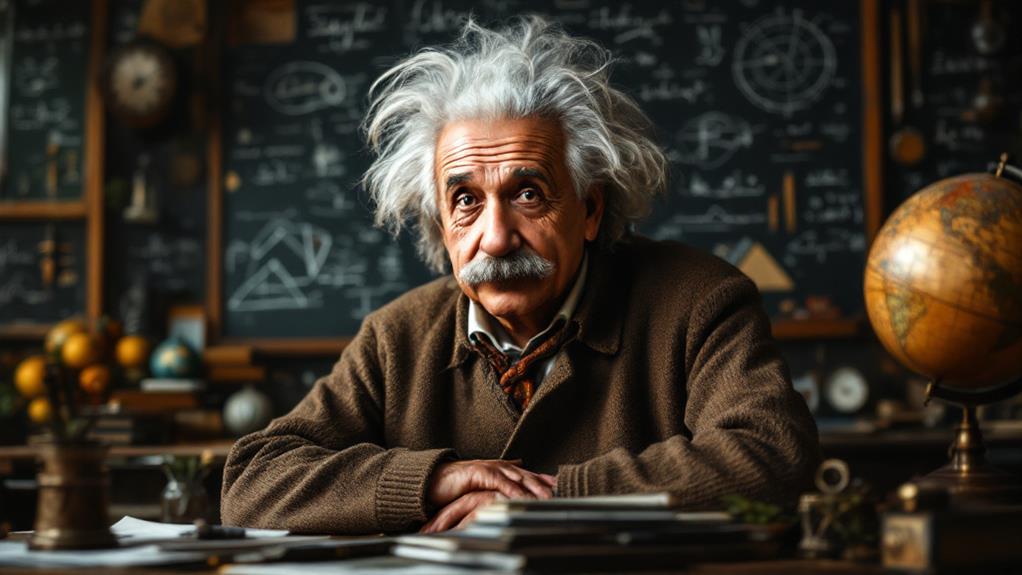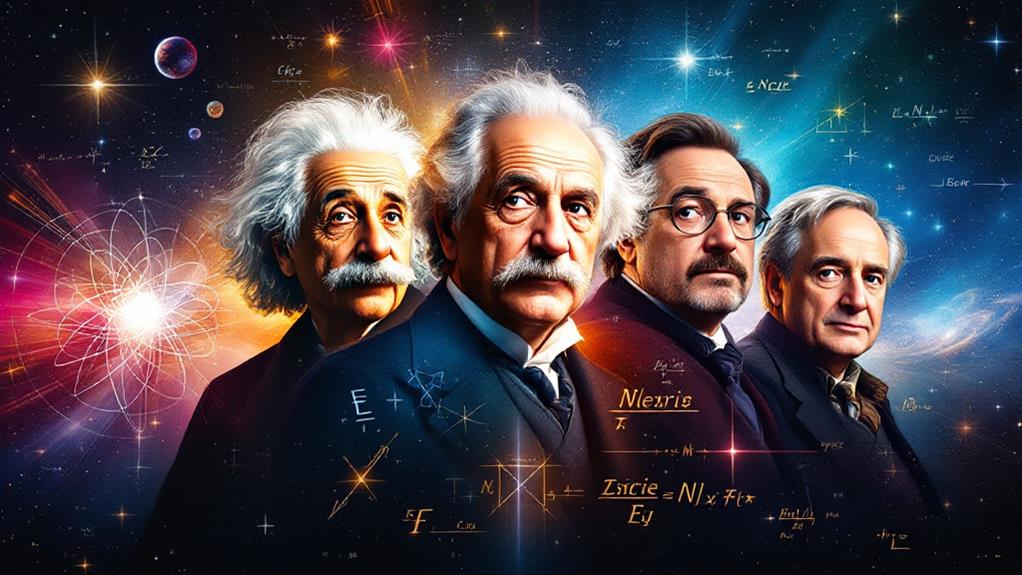Interesting Facts About Stephen Hawking: The Life of a Legendary Physicist
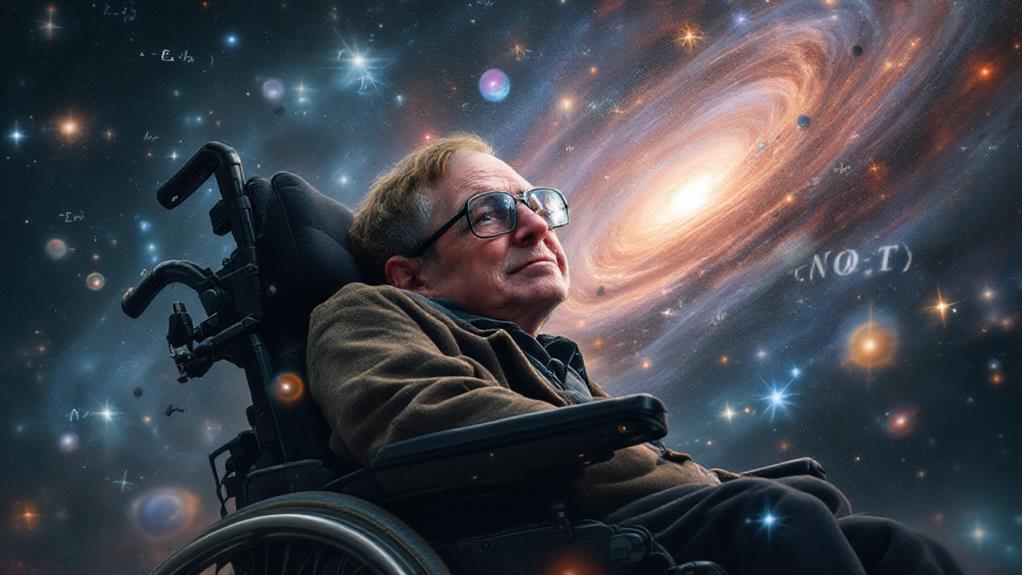
Stephen Hawking defied expectations throughout his life. Born in Oxford, he excelled in physics despite being diagnosed with motor neuron disease at 21. He revolutionized our understanding of black holes and the universe's origins while relying on a wheelchair and speech device. His book "A Brief History of Time" sold millions, making complex science accessible to the public. Hawking's wit and resilience inspired countless people. He married twice, had three children, and received numerous awards, including the Presidential Medal of Freedom. His cultural impact extended far beyond academia, leaving an unforgettable mark on science and society. Uncover how this exceptional physicist changed our view of the cosmos.
Early Life and Education
From an early age, Stephen Hawking showed signs of exceptional intelligence. Born in Oxford, England, on January 8, 1942, he grew up in a family that valued education and intellectual pursuits. His parents, Frank and Isobel Hawking, were both Oxford graduates and instilled a love for learning in their children.
Hawking's childhood experiences shaped his curious mind. You'd often find him taking apart clocks and radios to understand how they worked. His family influences played a pivotal role in nurturing his scientific interests. Despite their limited means, they encouraged his academic pursuits and supported his ambitions.
At St. Albans School, Hawking excelled in mathematics and physics. His teachers recognized his potential and nicknamed him "Einstein." He went on to study at University College, Oxford, where he pursued physics. Despite finding the coursework unchallenging, he graduated with first-class honors in natural science.
Hawking's expedition continued at the University of Cambridge, where he began his graduate studies in cosmology. It was during this time that he was diagnosed with motor neuron disease, a turning point that would shape his future career and legacy.
Diagnosis and Resilience
Facing adversity head-on, Stephen Hawking received his life-altering diagnosis at the age of 21. Doctors told him he had a rare form of motor neuron disease called amyotrophic lateral sclerosis (ALS), giving him just two years to live. This devastating news came shortly after he began his graduate studies at Cambridge University.
Despite the grim prognosis, Hawking's determination to overcome his physical challenges was extraordinary. He defied medical expectations, living for more than five decades after his diagnosis. As his condition progressed, he gradually lost control of his muscles, eventually becoming almost completely paralyzed and reliant on a wheelchair.
You might wonder how Hawking continued his pioneering work in physics. His resilience shone through as he adapted to his changing abilities. He developed alternative ways to communicate, including using a speech-generating device controlled by his cheek muscles. This allowed him to continue lecturing, writing, and contributing to scientific discussions.
Hawking's story is a memorandum to the power of the human spirit. His unwavering dedication to his work and his refusal to let his physical limitations define him inspired millions worldwide.
Groundbreaking Scientific Contributions
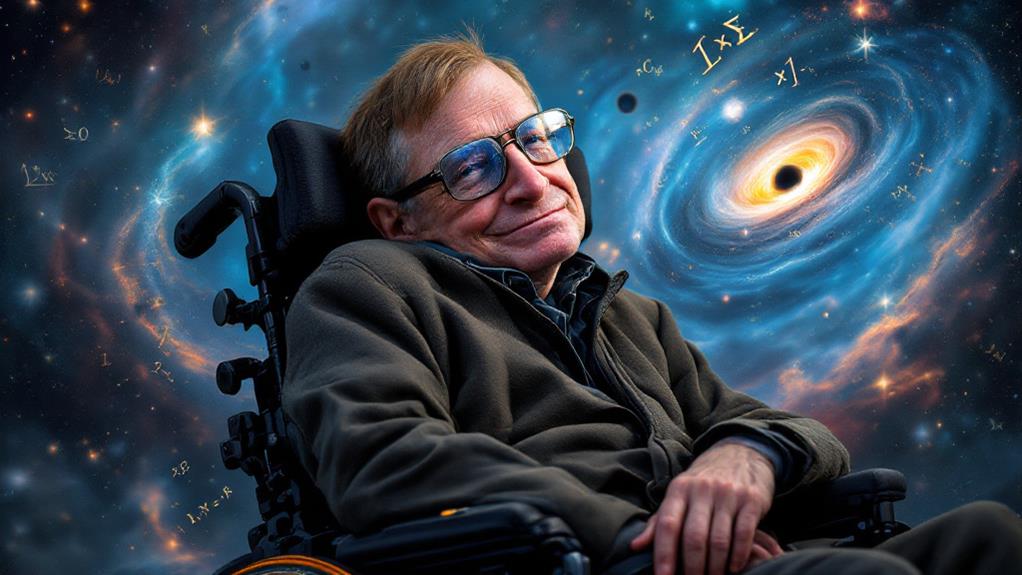
Stephen Hawking's resilience in the face of his physical challenges was matched only by the brilliance of his scientific mind. His groundbreaking work in theoretical physics revolutionized our comprehension of the universe. You might know him for his bestselling book "A Brief History of Time," but his contributions to science go far beyond that.
Hawking's most famous theoretical physics discoveries include his work on black holes. He proposed that black holes emit radiation, now known as Hawking radiation. This theory challenged the notion that nothing could escape a black hole's gravity. His research also led to the development of singularity theorems, which describe the properties of spacetime under extreme conditions.
In quantum mechanics research, Hawking made significant strides in understanding the early universe. He developed theories about the Big Bang and proposed models for the universe's origin. His work on the "no-boundary proposal" suggested that the universe has no edge or beginning in time.
Hawking's contributions extended to cosmology, general relativity, and the search for a unified theory of physics. His observations continue to inspire and guide scientists in their quest to explore the mysteries of the cosmos.
Popular Science Communicator
One of Hawking's most exceptional achievements was his ability to make complex scientific concepts accessible to the general public. He became a leading figure in science popularization, writing best-selling books that explained intricate theories in layman's terms. His most famous work, "A Brief History of Time," sold over 10 million copies worldwide and was translated into numerous languages.
You'll find that Hawking's influence extended beyond books. He made frequent media appearances, participating in documentaries, TV shows, and even animated series. His distinctive computerized voice and wheelchair became iconic symbols of his public persona. Hawking's wit and humor shone through in these appearances, endearing him to audiences and further breaking down barriers between complex science and everyday people.
Through his efforts, you gained a better understanding of topics like black holes, the Big Bang, and the nature of the universe. Hawking's dedication to sharing knowledge inspired countless individuals to pursue careers in science and sparked public interest in astrophysics. His legacy as a popular science communicator continues to influence how scientists engage with the public today.
Personal Life and Relationships
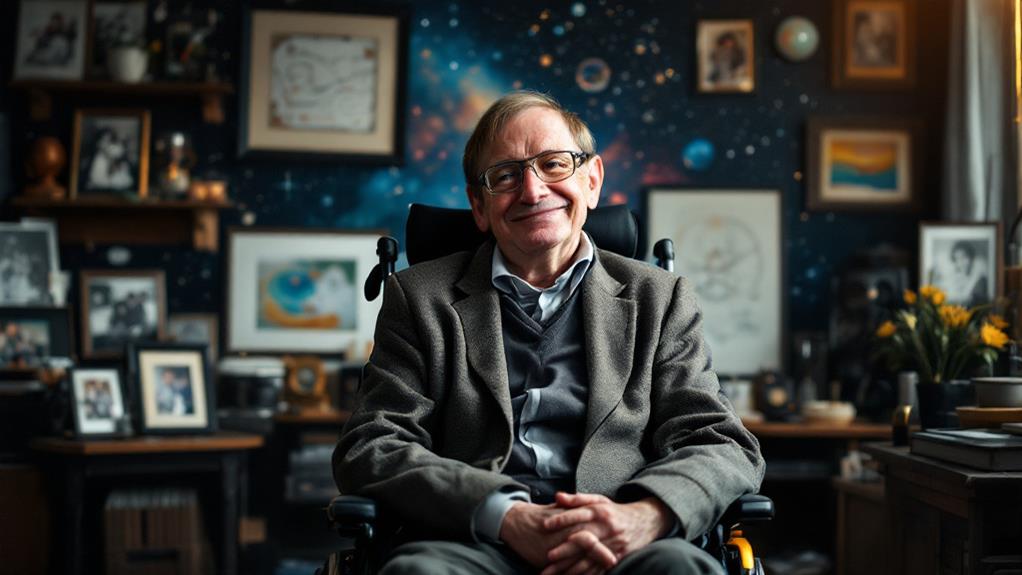
Behind the brilliant mind that untangled cosmic mysteries lay a complex personal life. Hawking's expedition through relationships and family life was as remarkable as his scientific pursuits. You might be surprised to learn that he married twice, first to Jane Wilde in 1965. They had three children together, but their marriage faced significant challenges due to Hawking's increasing disability and fame. Despite these obstacles, they remained together for 30 years before divorcing in 1995.
Hawking's second marriage to his nurse, Elaine Mason, lasted from 1995 to 2006. This union was controversial, with allegations of abuse surfacing, though Hawking denied them. Throughout his life, he maintained close relationships with his children and grandchildren, often involving them in his work and public appearances.
Despite his physical limitations, Hawking welcomed life fully. He enjoyed music, theater, and even experienced zero gravity. His personal life was marked by resilience and determination, mirroring the tenacity he showed in his scientific undertakings. Hawking's ability to balance family life with his groundbreaking work and public persona showcased his extraordinary capacity to overcome challenges in all aspects of life.
Honors and Awards
A constellation of accolades illuminated Stephen Hawking's extraordinary career. You'll find his name associated with some of the most prestigious awards in science and beyond. In 1974, he became one of the youngest Fellows of the Royal Society, a recognition of his pioneering work on black holes. The Albert Einstein Award followed in 1978, cementing his status as a leading theoretical physicist.
Hawking's contributions didn't go unnoticed by academic institutions worldwide. He received numerous honorary doctorates from renowned universities, including Cambridge, Oxford, and Harvard. These honors reflected not only his scientific achievements but also his ability to communicate complex ideas to the public.
You might be surprised to learn that Hawking's accolades extended beyond science. In 2009, he was awarded the Presidential Medal of Freedom, the highest civilian honor in the United States. His list of prestigious fellowships included the Lucasian Professor of Mathematics at Cambridge, a position once held by Isaac Newton. Throughout his life, Hawking's work continued to garner recognition, with awards like the Copley Medal from the Royal Society in 2006 further solidifying his legacy in the scientific community.
Cultural Impact and Legacy

Stephen Hawking's influence extended far beyond the domain of scientific accolades, leaving an enduring mark on popular culture. His bestselling book, "A Brief History of Time," brought complex cosmological concepts to the masses, selling over 10 million copies worldwide. Hawking's cultural influence was further amplified by his appearances on television shows like "The Simpsons," "Star Trek: The Next Generation," and "The Big Bang Theory," where he often played himself.
You'll find Hawking's public persona characterized by his witty humor and determination to overcome physical limitations. His computerized voice became instantly recognizable, and his wheelchair-bound figure became synonymous with scientific genius. Hawking's life story inspired films, documentaries, and even an opera, showcasing his impact on arts and entertainment.
Beyond pop culture, Hawking's advocacy for disability rights and his warnings about artificial intelligence and climate change shaped public discourse. His ability to communicate complex ideas in accessible ways made him a global science communicator, inspiring countless individuals to pursue careers in physics and astronomy. Hawking's legacy continues to influence scientific research, education, and public understanding of the universe.
